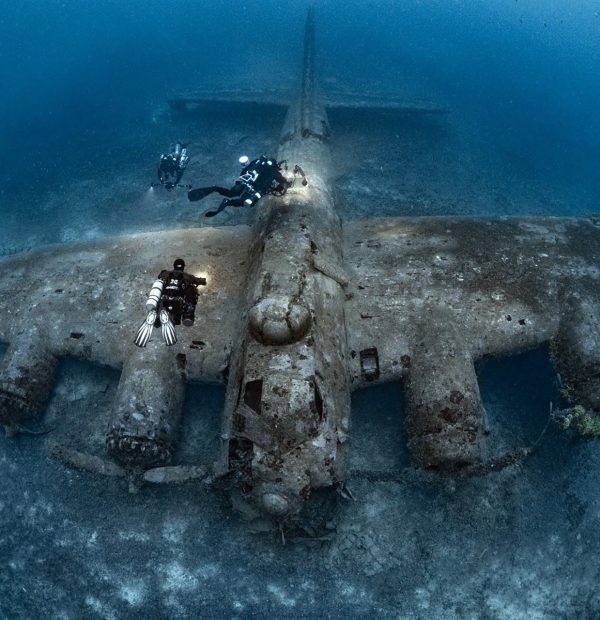Tuesday, 7 May 2024
Menu

In Singapore’s territorial waters, underwater archaeologists have discovered the wrecks of two ships that contain a number of magnificent artefacts. Among the artefacts they have brought to the surface include Chinese ceramics from the 14th century! The first wreck was found by accident by professional divers during their work. At the time, they were carrying out a project near Pedra Branca Island, which is the easternmost point of Singapore.

It all started in 2015. At that time, several fragments of pottery were accidentally discovered by professional divers, who were taking part in a naval operation organised nearby. As a result, they managed to discover the first shipwreck, which was located about 100 metres northwest of Pedra Branca Island.
A year later, the National Heritage Board (NHB) commissioned underwater archaeologists from ISEAS-Yusof Ishak (ISEAS) to investigate and perform a thorough exploration of the identified site. The researchers were also to carry out excavations to learn about and create accurate documentation of the site and to recover historic objects found on the shipwreck.
The aforementioned excavations continued until 2019 and led to the discovery of a second wreck. It is located approximately 300 metres east of Pedra Branca Island. In the face of this development, another survey and excavation was commissioned. The objective was identical – to explore and investigate the site and recover historic artefacts. Work on the second wreck began in 2019 and was completed in June 2021.

According to the findings of underwater archaeologists from ISEAS, the two wrecks are from different historical periods. From the information available, we know that the first wreck contained Chinese ceramics and may date back to the 14th century.Some of the key finds are Longquan and jarlet vessels and bowls. Fragments of blue and white porcelain bowls with lotus and peony motifs from the Yuan Dynasty were also found in the wreck.
This ship carried more of this blue and white porcelain than any other documented wreck in the world. Many pieces are rare and we believe one is completely unique – – said Dr Michael Flecker, visiting member and director of Maritime Archaeology Projects at ISEAS
According to ISEAS research, the second wreck is likely to be the merchant ship Shah Munchah, which sank during a return voyage from China to India in 1796.

Artefacts recovered from the wreck include a range of Chinese wares. In addition to ceramics, copper alloys, sand glass objects, as well as four anchors and nine cannons were found. The cannons were typically found on merchant ships used by the East India Company in the 18th and early 19th centuries.The vessels used them primarily for defence and signalling purposes.
Undoubtedly among the most interesting finds from the second wreck, were a fragment of a jar with a dragon motif, a ceramic duck, figurines of a happy Buddha and a little boy (a good luck figurine), the head of a Guanyin figurine, a figurine of a dog and the mythical sea creature Makara, a figurine of a Chinese couple holding fans on a biscuit base, and a figurine of a Qingbai horse with a rider on the side saddle.

Two wrecks full of historical artefacts have been explored and documented by archaeologists. The most valuable finds were brought to the surface and what will happen next? Of course, now all the found objects will be placed in the hands of specialists, who will take care of their conservation. After the accumulated salt has been removed, all the objects will be meticulously cleaned and catalogued.
After the documentation and thorough examination of the artefacts, the NHB will begin efforts to create an exhibition. This will ensure that all excavated items can be seen in the museum as early as 2021, the researchers said.

Underwater archaeologists have also stressed that this is an extremely important find as it reveals part of Singapore’s pre-1819 history. This is still a period that is little understood and full of white spaces, which discoveries like this help to fill with content.
Understanding our maritime history helps us understand Singapore’s relationships. our context and our place in the world. And also our geographical location and why it is important. But most of all, what is the reason for our existence and success. If we can understand our past, it gives us a more grounded understanding of the world we live in today – – said Yeo Kirk Siang, NHB Director of Heritage Research and Assessment










Welcome to DIVERS24.COM, your daily source of scuba news, freediving, scuba diving information, and equipment reviews. Our comprehensive coverage of the dive industry from A to Z provides you with all the latest scuba news, training updates, underwater photography tips, and everything else related to scuba diving. Whether you’re a beginner or an experienced diver looking for more knowledge about scuba gear or techniques – we’ve got it covered! With our in-depth articles written by experienced divers who have been there and done that, you are sure to find exactly what you need here at Divers24.com. Dive into scuba news today!
Underwater Media Sp. z o.o.
Szafarnia 11/F8,
80-755 Gdansk, Poland
Welcome to DIVERS24.COM, your daily source of scuba news, freediving, and scuba diving information. Sign in for a weekly news update and discount coupons for dive gear and apparel.
@2023 - underwatermedia.pl. All Right Reserved. Designed and Developed by Tworzenie stron internetowych Gdansk

The Divers24 portal is currently the largest online medium treating diving in Poland. Since 2010 we have been providing interesting and important information from Poland and around the world on all forms of diving and related activities.
Contact us: info@divers24.com